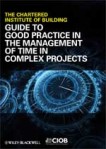Project, Program and Portfolio management is frequently seen as a seamless part of a business. However, distinctly different skill sets, personal attributes and capabilities are needed in the different roles. This post suggests a framework that can be used to understand the differences.
Role 1 – Technical
Most people start on a project management career as a team member focused on technical work. Aspects of the role include:
- Developing the skills to do the work
- Solving technical problems
- Supporting and engaging with fellow team members
- Planning the work to be accomplished in the next day or two
The team leader is a skilled and experienced technician with additional responsibilities to ensure the others in the team can be successful. The team leader’s additional roles include:
- Leading the team, leads by doing
- Skills transfer to new team members
- Resolving technical problems that are beyond individual team member’s skill sets
- Planning the work for the team for the next week or two
- Clearing road blocks and keeping project management informed.
Role 2 – Project Management
The step from team leader to project manager role is a career change. The project manager manages technicians by providing appropriate direction and leadership. Whilst technical understanding is important, the PM does not need to be a technician. For example, in many countries it is illegal for a construction project manager to install electrical wiring; this is a job for qualified electricians. Success for the PM lays in planning and managing the overall project he or she is responsible for and negotiating it through to a successful conclusion. Aspects of the role include:
- Designing the project to efficiently deliver stakeholder requirements within acceptable time, cost, quality and risk parameters
- Providing clear achievable and effective direction, leadership and motivation to the project teams through the team leaders
- Helping team leaders develop their skills and their team members skills
- Resolving stakeholder issues and problems across the spectrum of the project, usually through negotiation and communication
- Planning the project work through to completion and then transitioning the plan into action
- Acting as a buffer to protect the project team from undesirable external influence
Role 3 – Program Management / Project Director
Moving up the career ladder, the next career change is to the role of program manager or project director. The difference between these roles is the program manager will typically manage a range of projects across functions to achieve an organisational objective aligned with the organisations strategy. Whereas the Project Director has responsibility for the performance of project managers within a functional area; eg, the IT Department.
These are junior executive roles focused on achieving organisational objectives and creating value through the work of other managers. These managers, manage project managers. Success for a program manager is delivering organisational change and benefits. Aspects of the role include:
- Defining strategies to achieve the organisation’s objectives
- Initiating projects to deliver the required outputs
- Providing clear achievable and effective direction, leadership and motivation to the project managers
- Helping project managers develop their skills
- Negotiating stakeholder issues and resolving problems at the organisational level
- Planning the organisation’s work through to the achievement of the objective (minimum 1 to 2 years)
- Helping other organisation executives appreciate the value of the program and ensuring the work is aligned with the evolving organisational objectives
Role 4 – Organisational Governance
Slightly to one side of the ‘doing’ of projects and programs the organisational governance structures are supported by portfolio management and PMOs. These management roles are focused on providing strategic advice to the executive. The portfolio manager assesses current and planned projects and programs on a routine basis to recommend the optimum mix for future resourcing. The PMO manager should be operating at the strategic level, providing input to the portfolio management process based on the performance of current projects and additionally providing input to the organisations overall governance structure. Whilst the PMO staff are frequently technical, the PMO manager needs to operate effectively at the executive levels of the organisation.
Success in these roles is being a ‘trusted advisor’ to the organisations executives. Aspects of the role include:
- Defining appropriate governance processes to support the achievement of the organisation’s strategy
- Selecting projects and programs to deliver the required outcomes
- Negotiating resource and capacity issues and resolving problems at the organisational level
- Planning the organisation’s work on an on-going basis (minimum 2 to 5 years)
- Helping other organisation executives appreciate the value of the project and program portfolio and ensuring the work is aligned with the evolving organisational objectives
Whilst these four very different roles are frequently lumped under the one umbrella of project management, as this post has demonstrated, very different skill sets are required for each and transitioning from one role to another, needs to be treated as a career change.
For more information see:
- The Accidental Project Manager – The Getting of Wisdom http://www.mosaicprojects.com.au/Resources_Papers_036.html
- Designing a PMO to Succeed and Survive http://www.mosaicprojects.com.au/Resources_Papers_064.html
- Understanding Programs and Projects http://www.mosaicprojects.com.au/Resources_Papers_078.html



